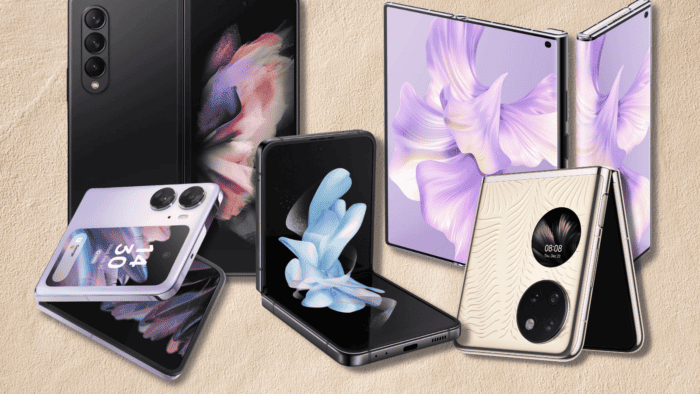The evolution of smartphone technology has seen several turning points; one of the most fascinating things in recent years is the advent of foldable smartphones. This invention changed the way we think about mobile devices, as it offered a level of flexibility and usability that was simply not possible with traditional mobile phones. As foldable technology advances, the future possibilities for these flexible gadgets seem even more fascinating.
1. The Rise of Foldable Smartphones
Foldable phones are an innovative technology that challenges the accepted design of mobile devices. These gadgets allow users to increase the screen size when needed and then fold back into a more compact form factor for easier mobility by incorporating foldable displays. Foldable phones initially attracted people because they offered a unique and flexible user experience: the ease of use of a phone combined with the larger display of a tablet.
2. Development of Display Technology
Advances in display technology are one of the key areas where foldable phones are being invented. Durability and screen visibility were issues with early foldable devices, but subsequent developments have improved these factors significantly. Manufacturers are now using modern materials and processes to produce increasingly flexible and robust displays. These developments often improve the user experience by improving brightness, color accuracy, and durability. As technology advances, we can expect increasingly advanced displays with superior performance and longevity.
3. Improved Build Quality and Durability
Durability has always been a major concern for foldable phones, given the complexity of their structure. However, recent developments have focused on improving the durability and build quality of these devices. Manufacturers are experimenting with new hinge structures and protective coatings to ensure that foldable phones can withstand regular use without compromising their usability. Improved durability not only extends the lifespan of these products but also increases user confidence in their reliability and effectiveness.
4. Improved UI and Software
As foldable phones continue to gain popularity, software developers are adapting their products to take advantage of their special qualities. The improved UI and software are designed to provide a seamless experience when switching between multiple screen modes. Foldable displays optimize features such as multitasking, split-screen viewing, and app continuity, allowing users to maximize the adaptability of their devices. Maximizing the potential of foldable devices will largely depend on the development of user-friendly software.
5. The Rise of New Form Factors
While the design of the first foldable phone focused on a single foldable screen, the future is expected to bring more creative forms. Manufacturers are looking at new designs such as bi-folding devices and rollable screens that offer multiple ways to interact with and use the technology. These new form factors can offer consumers more freedom and usability, expanding the possibilities for foldable phones and how they can be integrated into everyday life.
6. Improve Market Expansion and Affordability
As foldable smartphone technology continues to evolve, it should help reduce production costs and improve affordability. Early foldable devices were expensive and only available to a handful of customers. However, as production and economies of scale improve, foldable phones can become more competitive in cost. This increased affordability will help drive greater market expansion, making foldable devices more accessible to more customers.
7. Combination with Other Technologies
In addition to their advancements, foldable phones are joining other emerging technologies. For example, the combination of foldable displays and 5G connectivity can further enhance the functionality of these devices. 5G’s low latency and fast data transfer will complement the flexible nature of foldable phones, enabling a more immersive experience and better performance. As technologies continue to converge, foldable displays combined with other technologies will open up new and fascinating possibilities.
8. The Future of Foldable Smartphones
Looking to the future, there are many opportunities for foldable phones. The development of these gadgets will be driven by continued improvements in materials, design, and software, increasing their adaptability, durability, and usability. New form factors and integration with emerging technologies will provide greater opportunities for foldable smartphones to provide consumers with a range of advanced features and experiences. As technology evolves, foldable phones are likely to become increasingly important, influencing the way we interact with tools and digital environments.
Conclusion
With its unique combination of flexibility and functionality, foldable smartphone technology marks a major turning point in the evolution of mobile devices. Given the continued improvements in display technology, durability, software, and form factors, the future of foldable phones could be fascinating and revolutionary. These gadgets are certainly important in determining the direction of mobile technology as they continue to evolve and become easier to use by providing creative and flexible answers to consumers’ digital needs.
FAQs
1. Describe a foldable smartphone.
A foldable smartphone is a mobile device with a flexible display that allows the phone to fold or unfold, giving consumers a smaller phone- or tablet-like display. This design aims to combine the larger screen size of a tablet with the mobility of a smartphone.
2. How does a foldable smartphone work?
Advanced flexible display technology and hinge mechanisms allow foldable smartphones to fold and unfold their screens. When folded, the gadget functions like a standard smartphone. When unfolded, it reveals a larger screen for better multitasking and usage.
3. How can foldable smartphones help?
Foldable phones offer benefits such as larger screens that can enhance productivity and multimedia experiences while maintaining mobility. It is a pocket-friendly gadget that offers flexible usage environments, including multitasking and immersive media consumption.
4. Can the foldable phone withstand this?
Foldable phones have improved in durability over time. Advances in materials and hinge mechanisms have led to sturdier, more reliable gadgets. However, they are still more complex than traditional phones and require careful handling to ensure longevity.
5. What is the current price range for foldable phones?
Prices for foldable phones vary depending on the make and model. Early foldables were expensive, but as production costs dropped and technology advanced, prices became more competitive. Ask your local store for current prices on specific models.




